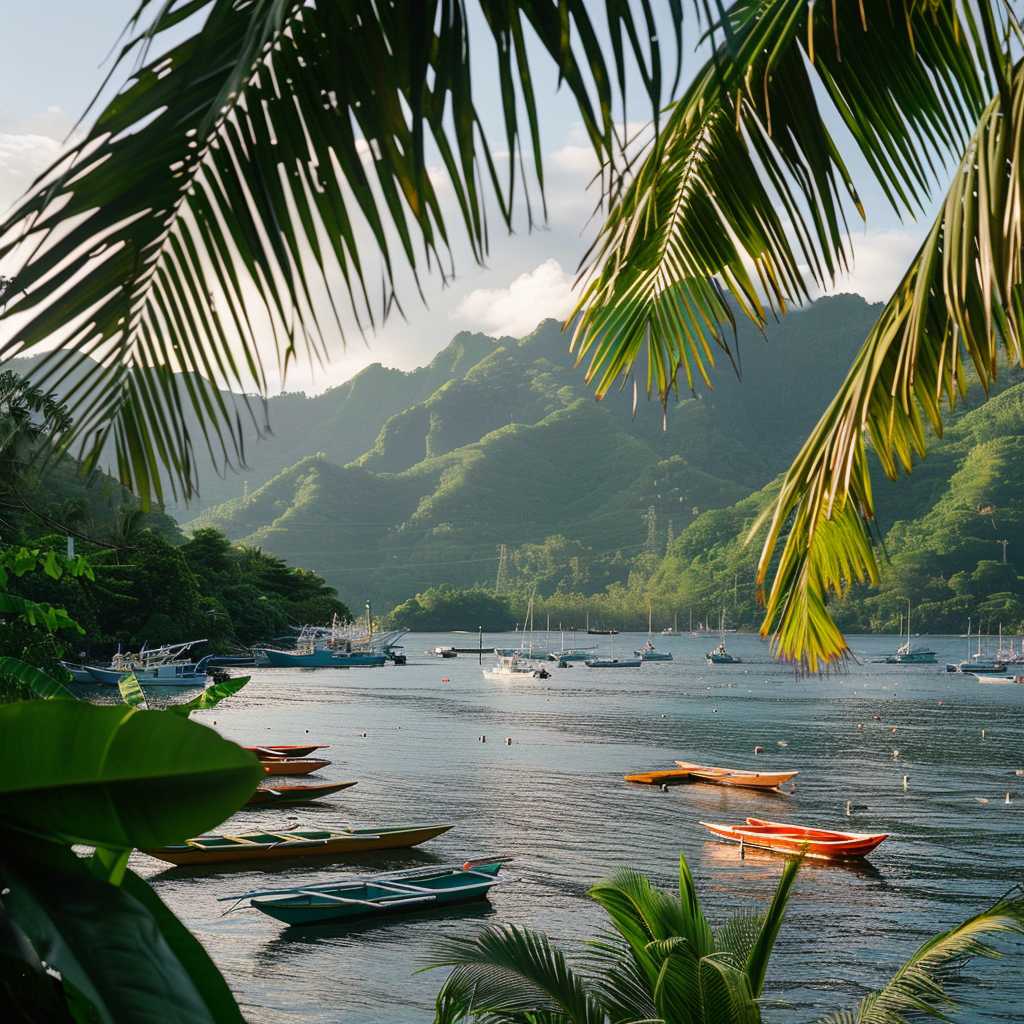Understanding American Samoa: A Glimpse into the Unique US Territory in the South Pacific
American Samoa is an unincorporated territory of the United States located in the South Pacific Ocean, east of the international date line. Known for its rich Polynesian culture, beautiful landscapes, and strategic location, American Samoa offers a unique blend of traditional customs and modern American influences. This article will explore the history, culture, geography, economy, and political status of American Samoa, providing a comprehensive understanding of this distinctive territory.
History: Tracing the Origins of American Samoa
The history of American Samoa is a fascinating combination of ancient Polynesian heritage and more recent colonial interaction. The islands have been inhabited for over 3,000 years by Polynesian settlers who developed distinct societies well before European contact.
Pre-Colonial and European Contact Era
Historical evidence suggests that the Samoan islands were settled by seafaring Polynesians as early as 1000 BCE. Over centuries, complex chiefdoms and social structures evolved, with a culture focused on communal living, kinship bonds, and respect for traditional leaders known as Matai.
European contact began in the 18th century when explorers such as Jacob Roggeveen and Louis Antoine de Bougainville visited the islands. However, it was not until the arrival of missionaries in the 1830s that significant interaction with Europeans began. The introduction of Christianity had profound effects on Samoan society.
The Tutuila Treaty and US Naval Involvement
Following tensions between Germany, the United Kingdom, and the United States over control of the Samoan Islands, the 1899 Tripartite Convention was signed. Western Samoa (now independent Samoa) was awarded to Germany while the United States took control of the eastern islands after local leaders signed the Deed of Cession. It was specifically the 1900 Treaty concerning the island of Tutuila and later the 1904 deed regarding the Manu’a islands that solidified American claims.
World War II and Aftermath
During World War II, American Samoa became a strategic outpost for US military forces in the Pacific. The presence of US personnel led to rapid modernization and infrastructure improvements. Following the war, American Samoa underwent significant social and economic changes but remained a territory.
Samoan Culture: Preserving Ancient Traditions
Samoan culture is one of American Samoa’s most valuable treasures, characterized by its communal way of life and maintenance of fa’a Samoa—the Samoan way.
Social Structure and Communal Living
At the heart of Samoan social structure are extended family units called ‘aiga’, led by chiefs (Matai) who handle governance and land distribution within their communities. These leaders are pivotal in maintaining customary land tenure systems which involve communal use and stewardship obligations.
Religious Influence and Practices
Christianity plays a central role in modern Samoan life with most citizens being devout churchgoers whether embracing Catholicism or Protestant denominations. Religious observances and church activities often intersect with secular community events emphasizing shared values and unity.
Dance, Music, and Art
Samoan dance (siva) and music are integral parts of cultural expression characterized by storytelling through movement and rhythm. Traditional tattooing (tatau), tapa cloth making, wood carving, and pottery further exemplify Samoan artistic traditions that continue today.
Geography: The Lay of Lands in American Samoa
American Samoa encompasses five main volcanic islands and two coral atolls covering an area of approximately 76 square miles. These landforms are known for their rugged terrain, tropical forests, and coral reefs teeming with marine life.
Main Islands and Natural Features
Tutuila is the largest and most populous island featuring Pago Pago Harbor—a naturally deep harbor that has long been a focal point for trade and naval passage. Other key landscapes include Aunu’u Island’s volcanic crater lakes; Ofu and Olosega Islands’ spectacular beaches; and Ta’u Island’s rainforest-filled national park.
The Unique Ecosystems
Thanks to isolation from other landmasses, these islands boast unique endemic species alongside more common tropical flora and fauna. Efforts are ongoing to preserve endangered native species like flying foxes—large fruit bats indigenous to many Pacific islands—and to safeguard fragile habitats from invasive species.
Economy: Balancing Traditional Livelihoods with Modern Challenges
The economy of American Samoa primarily relies on fisheries, manufacturing—especially tuna canneries—and remittances from Samoans living abroad.
Fisheries’ Vital Role
Fisheries play a critical role in both commercial enterprise as well as subsistence living for locals. However, decreasing fish stocks pose challenges that necessitate sustainable management strategies.
The Importance of Canneries
The tuna canning industry has historically been a major employer but faces pressures from global market competition and local environmental concerns. Plans are often debated to diversify American Samoa’s economy beyond reliance on canneries.
Agriculture’s Position
Subsistence farming remains an important aspect providing staple crops like breadfruit, taro, coconuts, bananas, along with pig farming which holds significant traditional value across Pacific cultures including Samoa.
Political Status: Navigating Self-Governance within US Influence
As an unincorporated territory of the United States, American Samoa’s political framework leans on a peculiar blend where local customs coexist beside federal policies—a complexity mirrored nowhere else in America’s territories or states.
Local Governance vs. Federal Jurisdiction
Samoa has its own constitution, elected governor, local legislature (Fono), but remains subject to oversight by a US-appointed Secretary of the Interior. Citizens are considered US nationals but not citizens unless they naturalize; therefore they cannot vote in presidential elections although they send non-voting representatives to congress.
Contemporary Discussions on Status
Debates on self-determination occasionally arise considering questions around increased autonomy versus statehood versus even reunification with independent Samoa. Nonetheless, many Samoans value ties with USA for economic benefits like federal funding yet champion their distinct cultural identity relentlessly.
Notes
*Image Description*
The image illustrates a picturesque view of Pago Pago Harbor surrounded by lush green mountains on Tutuila Island in American Samoa. Colorful traditional canoes can be seen near the shoreline facing out toward calm blue waters with small fisherman boats visible in the distance nestled against a backdrop scenic bay concentration Ayarea chiefs-lines celebrations alignment canoe arc evening scene tranquil.
